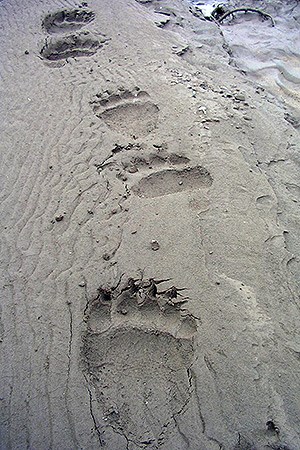
NPS Photo
Bears are a vital part of natural ecosystems of national parks and other wild places. Bears are considered ecosystem engineers, meaning they have the ability to modify their environment. Through their foraging habits, bears spread plant and berry seeds in their droppings and spread marine-derived nitrogen into the forest surrounding salmon streams. Bears are important links in food webs and help maintain populations of deer and other prey species through predation.
At one time, bears were widespread across the United States. However, threats such as habitat loss and unregulated hunting greatly reduced the areas where they can be found. Thanks to conservation efforts, brown bears and black bears are making a comeback, although they remain limited by the availability of suitable habitat. The lack of suitable habitat continues to affect the polar bear, grizzly bear in the lower 48 states, and Louisiana black bear (Ursus americanus luteolus, a subspecies of black bear), all of which are federally threatened. In many cases, national parks provide core habitat that is essential for bear populations.
Park staff engage in bear management to ensure healthy and sustainable bear populations. Bear management activities range from wildlife protection to habitat restoration to conservation research. Decisions about how to manage bears require knowledge about many aspects of bear biology, behavior, and movement in a specific location.
Scientists from the National Park Service and cooperating federal and state agencies and academic institutions collect and analyze data about bears to assist in their conservation and management. Not only are there differences between bear species, there are also differences in behavior and biology between bears of the same species in different places. Bears adapt to their environments and can learn from experience. The behavior and survival strategy of a bear that has never encountered a human will be different from a bear that lives in close proximity to human developments.
Using science to understand specific biological and behavioral needs of bears, managers help ensure that bears will be a part of the national park experience for many generations to come.
Last updated: April 18, 2016
